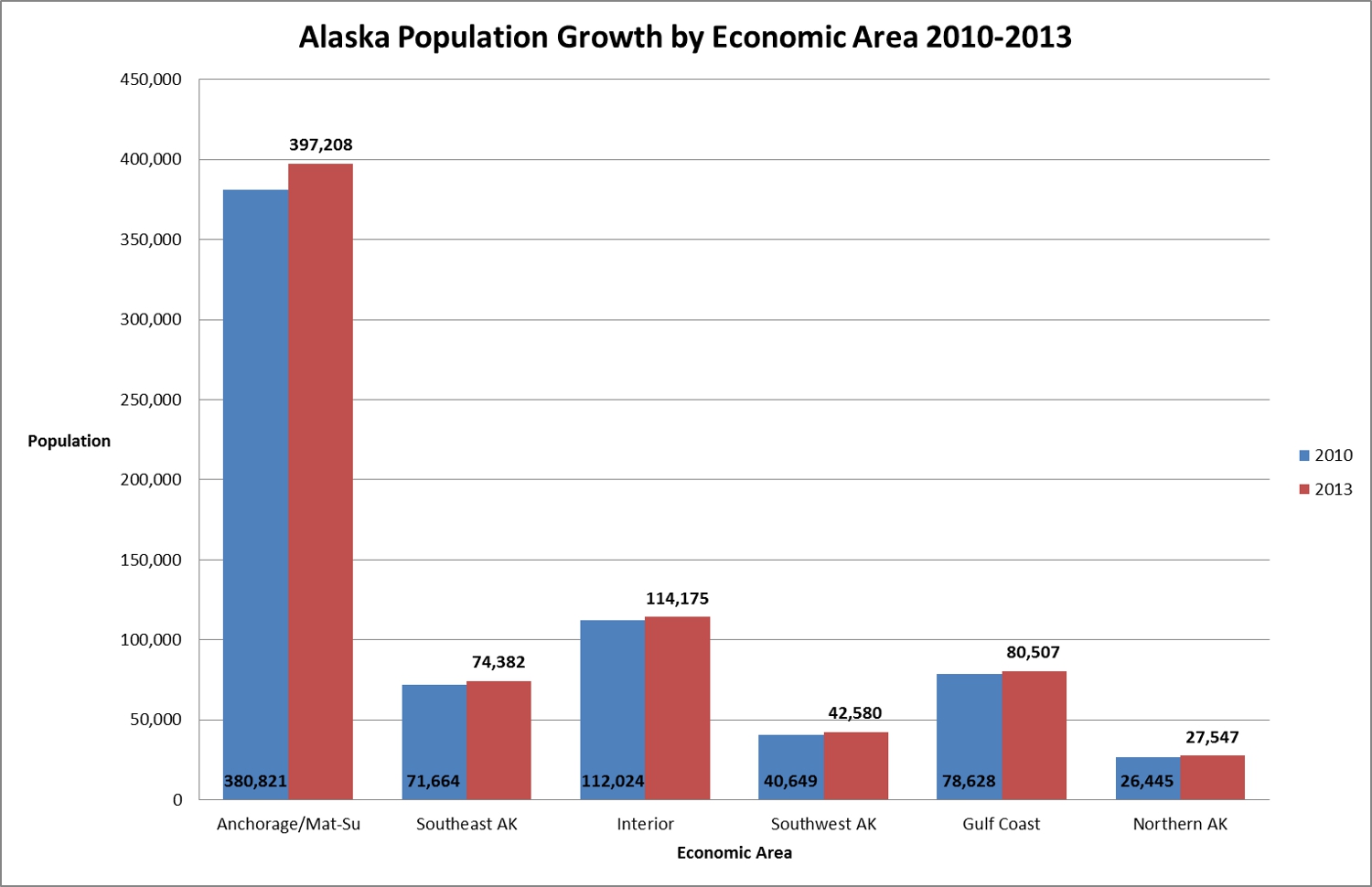
In the first three years of this decade, Southeast Alaska reversed a trend of anemic population growth that defined the previous 10 years for the region.
Southeast had the second largest population increase of any area in Alaska from April 2010 to July 2013, according to figures released Friday by the Alaska Department of Labor and Workforce Development.
The panhandle added about 2,700 residents over the three year period, for a 3.8 percent increase.
“Southeast for the past few years has been seeing population growth both through what we call births minus deaths we call natural increase, and then also net migration,” said State Demographer Eddie Hunsinger. “The last decade, the 2000s, Southeast would typically see net outmigration. So even though lots of people were moving to Southeast, a few more were moving out. But these last few years have been positive for Southeast.”
The growth in Southeast was on par with the state’s population as a whole, which grew by 3.7 percent from 2010 to 2013.
Hunsinger says Juneau added nearly 1,800 people for a total population of 33,000, up about 6.7 percent from the end of the last decade.
“Other communities in Southeast are also gaining population, but primarily through natural increase – the births minus deaths,” Hunsinger said. “Juneau is the one area that’s in Southeast that’s been gaining both through some net migration increases as well as natural increase.”
Juneau Economic Development Council Executive Director Brian Holst says population growth is a positive for the Capital City and Southeast. But he says there are some things to be concerned about looking into the future. Holst says job growth in the region stalled, and the number of people moving to Southeast slowed in the first half of 2013.
“Something that we’ve been thinking about for the past few years, is that as the economy picks up in the Lower 48, the relative attractiveness of living here in Southeast Alaska diminishes,” Holst said.
He notes that a strong private sector has buoyed the region’s economy in recent years, while important public sectors like the federal and local governments have dealt with budget cuts.
“If those budgets turn around soon I think we’ll see government work stay stable and then that will bode well for our private sector to continue to grow more slowly,” said Holst.
The Anchorage/Mat-Su area had the highest population growth over the three year period, adding about 16,300 people. The Interior gained about 2,100. Southwest Alaska saw its population increase by 1,900. The Gulf Coast added 1,800 residents. And Northern Alaska went up by 1,100.
Hunsinger says the numbers are based on data from the U.S. Census Bureau, federal tax returns, and Alaska Permanent Fund Dividend applications.
